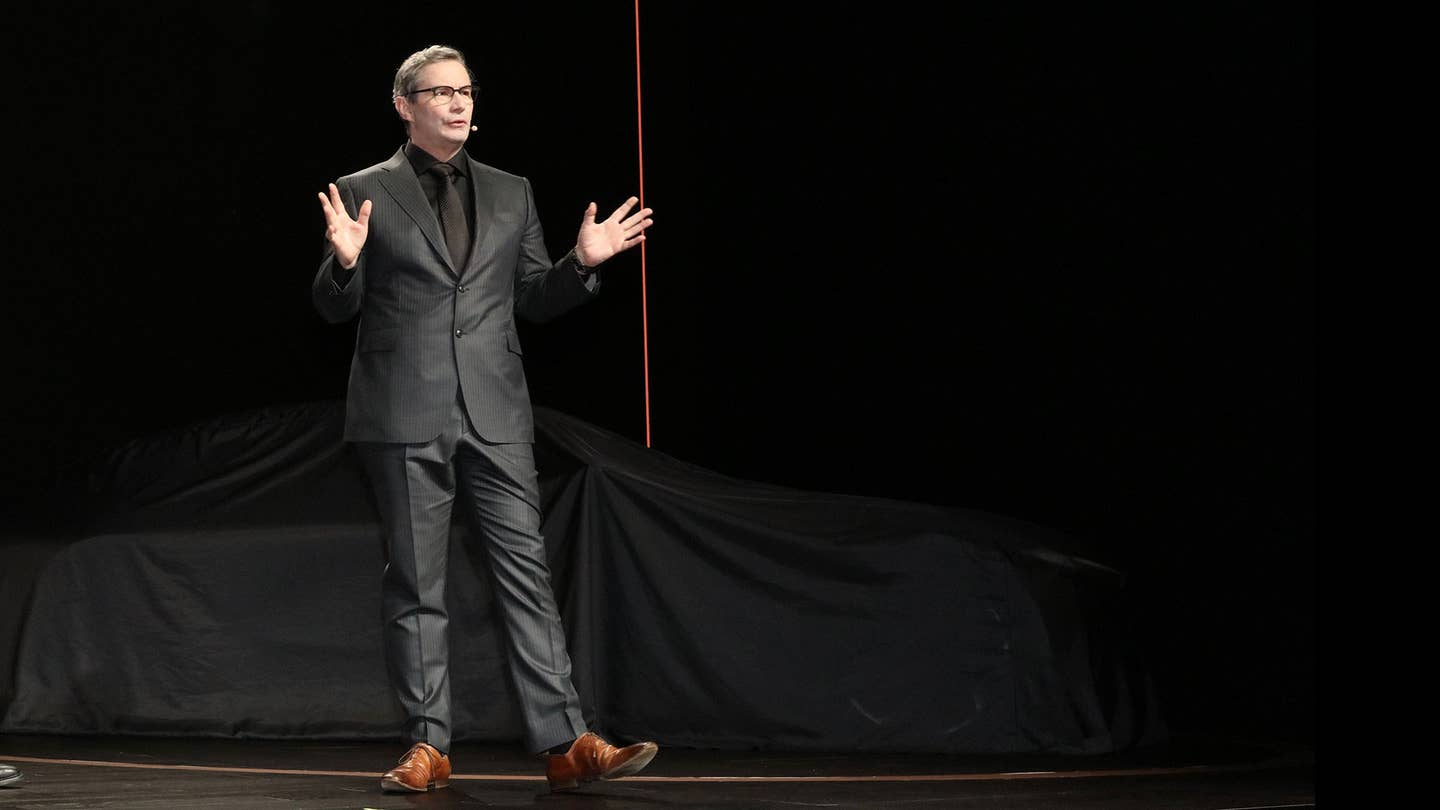Genesis Designer Luc Donckerwolke’s Camera Obsession
The former Audi, Bentley, and Lamborghini designer works with “image” in every sense.

Luc Donckerwolke has made a career of pushing established car brands in unexpected directions that, after the fact, seemed inevitable. He downsized Audi’s refined elegance into the segment-busting, tiny-but-upscale A2. He pulled Lamborghini away from decades of vulgar extroversion to create a Gallardo that could almost be called elegant. He weaned Bentley from the bigger-is-better ethos and, drawing on a century of Crewe’s sporting heritage, crafted the gorgeous EXP 10 Speed 6 sports car. Now he has a new challenge: alchemizing the frugal lumpen of Hyundai’s double helix into a global luxury brand called Genesis.
“I’m a pure car fanatic, and everything I do has a car relation,” he told me en route to the Beijing Auto Show. But perhaps more important than his deep automotive passion will be his understanding of image, both metaphorical and literal: Donckerwolke, you see, collects fancy cameras.
For our ongoing series, Favorite Things, where car designers talk about their most beloved non-automotive objects, Luc picked a pair of very different cameras. [Conversation has been edited.]
The Drive: Tell me about a high-end item you love from a design standpoint.
Luc Donckerwolke: After collecting a lot of cameras and testing them, I ended up deciding to go the old school way and get a Leica—an M8. It’s kind of a respectful heritage that they have, and the fact that they kept on improving on their technology. But it’s also the fascination of an object that, formally, is true to its roots.
This is what fascinates [me] as a designer. A designer’s job is to understand how the product can keep its identity throughout generations, and also appeal to new and different people. It makes me feel when I’m using it like it’s a holiday, like it’s a passion. It forces me to think as well—to think about composition, to think about how I photograph: the whole process of light, speed, composition. Which is not automatic. It’s like when I get into a race car: it’s not driving a car like normal. You basically have to feel it.
TD: That’s a great description also of your personal connection to the product, and its connection to your work. What about a more everyday item that you love?
LD: The other [item] I wanted to talk about is also a camera. It’s the other end of the spectrum, but not in terms of purchase price. It’s s Canon Eos 1DX, which is not a cheap camera, but it is a completely different approach. Like the Leica, it’s a high-end camera. But after ten years the Leica has retained a huge amount of its value, where the Canon, while it was almost the same price as the Leica, after five to ten years it’s completely devalued. Not because the camera is not good anymore technically, but because it has been devalued by the next model coming.
So it’s another kind of approach where you basically have a difference in keeping the value of the product by the way the product is respected by the brand. If you make an update—like, there comes the Eos 1DX Mark II, which has many more technical features—automatically, the previous one loses about fifty percent of its value.
TD: I’m interested in how a brand works to maintain that value. What are the essential things that a brand needs to do to be more like Leica?
LD: This is what keeps me busy everyday when I design a car for a brand. Especially like the Genesis brand today, or like Bentley before—how can you as a designer contribute to not having a product losing its value over time, by perfecting the DNA of the brand, and not making a product that actually dates the old one? Why is the Porsche 911 an achievement? It has been perfected by the next generations. It’s kind of like creating a respect[ed] heritage, so you’re not taking a white piece of paper and starting from zero, but you take the essence of the design and you carry on.
Sometimes it gets done accidentally. Porsche did it because they were not a design-driven brand, they were an engineering-driven brand. So the design was kept because they were saying, "oh, let’s make more power, let’s make it more drivable, let’s make it easier to use," and then the designers have few things to play with because the engineers say "no-no-no-no-no, we don’t have budget for that; just keep the design we’ll put [in] another engine."
The Canon Eos is a cult within Canon, but by bringing a new model that is so much better in every aspect—there is actually hardly a part, apart from the logo, that has not been touched. Even sometimes they change the logo! They basically make you want to throw the other one out and make you get a new one.
TD: You think that’s based on a continuity of design as much as everything else?
LD: Yes definitely. It’s continuity of design. It’s basically making your customers connoisseurs. You basically transform them into an elite that knows, that can appreciate. So it’s not only design, but you have to communicate. They are becoming collectors. They are becoming, not users, [but] privileged relations to your company, to your brand.
TD: That seems like a challenge with a new brand. Is this the goal with Genesis as well?
LD: Definitely, definitely. In setting up this brand, we are basically building up our brand values. We identified the brand values, we identified the DNA, in order to create something distinct, something also, with attitude of Korea, which is an audacious culture. And obviously we want to make people realize how important the phenomenon of icon-building is for us.
